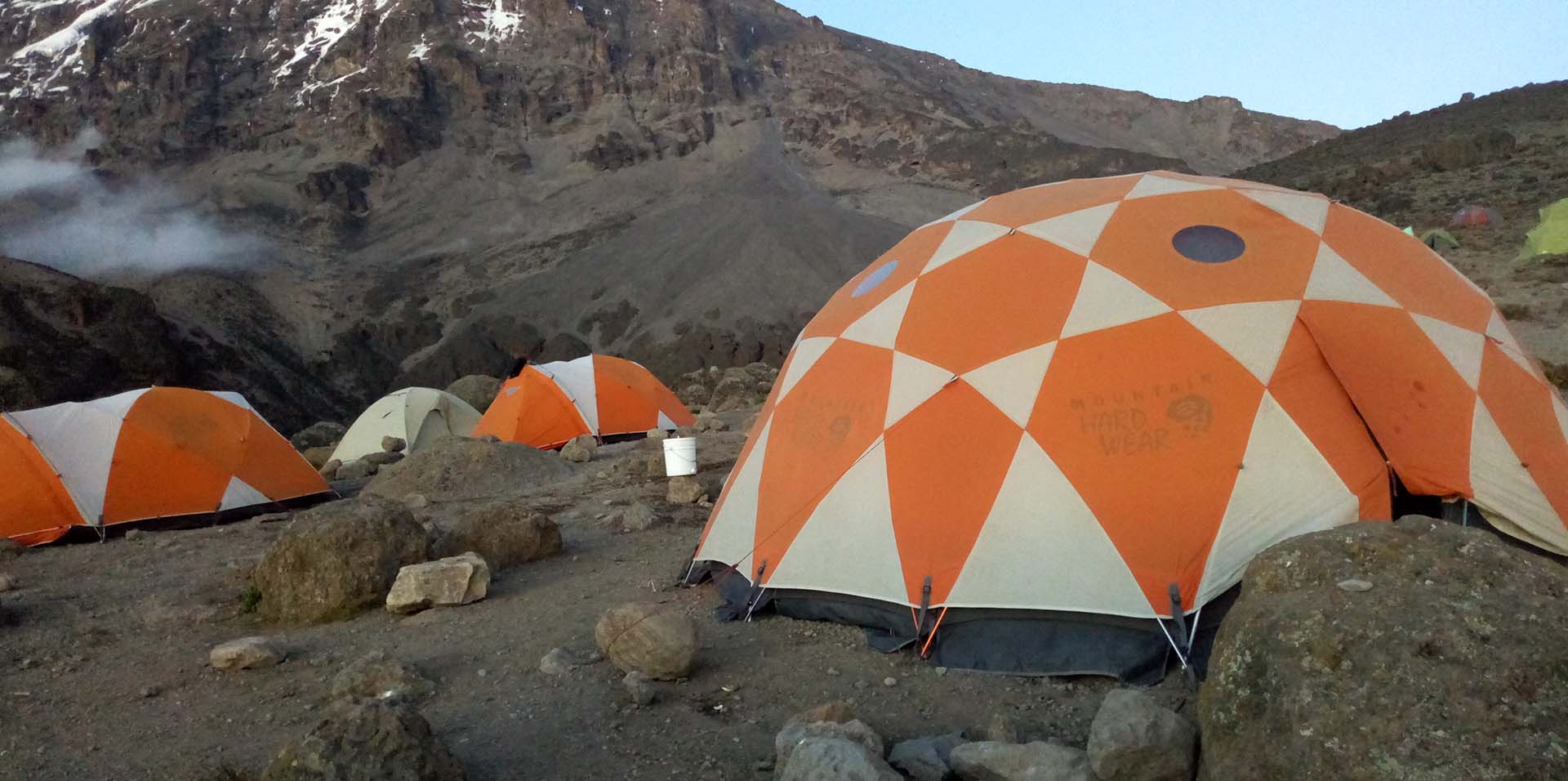The difference between the Standard Package and the Deluxe Package
For climbers, we offer two different packages to choose from, depending on your needs and preferences. Our ‘Standard Package’ provides good and safe service at an affordable rate, while our ‘Deluxe Package’ offers a higher level of comfort and superior service delivery, including luxurious hotel accommodation and personalized safety features.
Standard Package
The standard climb is an optimal choice for most travelers, as it strikes a balance between affordability and high-quality service. This package includes standard hotel accommodation, top-notch mountain support from expert guides and porters, who will take care of all your luggage and equipment, set up tents, cook meals, and handle any issues that may arise during the hike. The menu served on the hike is diverse, featuring a first course, a second course with a variety of meat and fish, a rich selection of drinks and starters, fresh vegetables, and fruits. This climb promises to be a pleasurable journey to the summit of Kilimanjaro, the highest point in Africa. It offers an exceptional experience that combines adventure with comfort, and ensures that travelers can focus on the awe-inspiring natural beauty that surrounds them.Deluxe Package
The Deluxe Package is designed for climbers who value comfort and safety as they ascend Kilimanjaro. This premium package offers a wide range of amenities and accommodations at the best hotels in the region. Our ultimate level of service guarantees an unforgettable experience during your Tanzanian expedition. In addition to all the benefits of the Standard Package, the Deluxe Package provides extra conveniences and superior accommodations at top-rated hotels. Our commitment to excellence and unparalleled expertise ensures that your journey to Tanzania will be an unforgettable experience.Safety |
Standard Package |
Deluxe Package |
Fully-loaded medical Kits |
||
Emergence oxygen tank |
||
Pulse Oximeter: To conduct a daily measurement of oxygen levels for each climber. |
||
ALTOX Personal Oxygen System |
||
A stretcher or a Litter fully rigid steel frame. |
||
The Gamow Bag: A hyperbaric chamber (portable altitude chamber) for emergency situations. |
||
VHF handheld radios: Carried on each trek for easy communication between guides, camp managers, and the office. |
||
The rescue fee in the mountains. |
||
Management and Safety Procedures |
||
Medical evacuation with AMREF Flying Doctors or Kilimanjaro Search and Rescue. |
||
Health and Meals on the Mountain |
Standard Package |
Deluxe Package |
All meals while on the Mountain |
||
Fresh, healthy, and nutritious foods in large portions |
||
Clean, purified drinking water |
||
Champagne on Summit |
||
Warm water for washing every-day |
||
Individual washbasins are provided for each trekker and guest upon arrival at the campsite. |
||
Private Portable flush toilet |
||
Camping Equipment & Accommodation |
Standard Package |
Deluxe Package |
4 Season mountain tents, Double layered Sleeping Mats, Crew tents, Mess tent and Toilet tents |
||
Large aluminum chairs with backs and armrests, Aluminum Tables, High powered solar LED lights |
||
Sleeping Bags |
||
Accommodation – Bed and Breakfast |
||
Full board Accommodation – Bed, Breakfast, Lunch and Dinner |
||
Standard hotel accommodations for 2 nights; one night before and one night after the trek. |
||
Comfort hotel accommodations for 2 nights; one night before and one night after the trek. |
||
Transport & Other Inclusions |
Standard Package |
Deluxe Package |
Arrival and Departure transfers |
||
Return Transportation in Destination Location |
||
All Government Taxes and all Park fees |
||
Professional experience mountain guides and porters |
||
Fair and ethical treatment of porters |
||
A personal Porter to carry your day-pack during summit attempt |



























